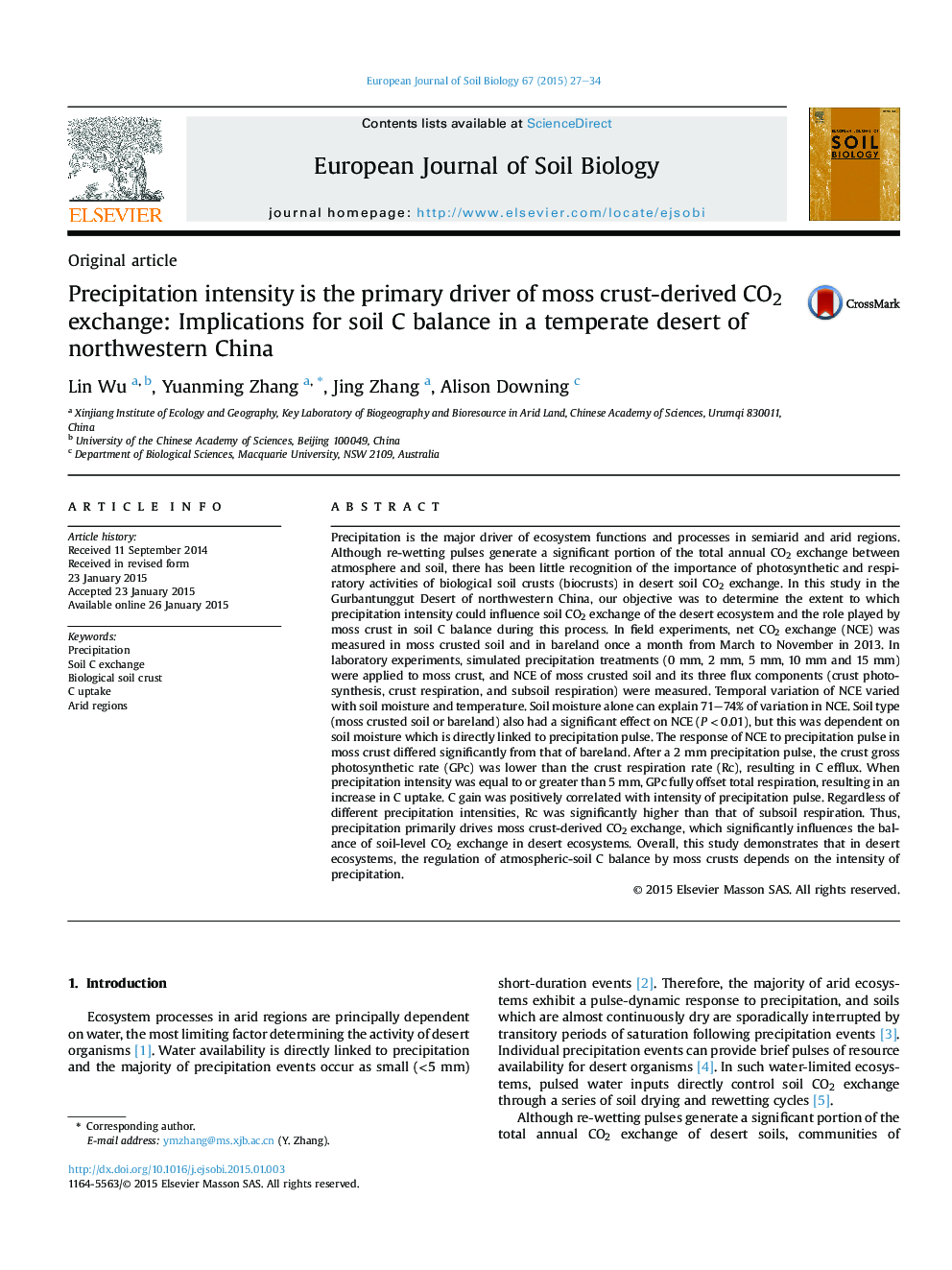| Article ID | Journal | Published Year | Pages | File Type |
|---|---|---|---|---|
| 4391784 | European Journal of Soil Biology | 2015 | 8 Pages |
•Soil moisture explained 71–74% of variation in soil net CO2 exchange.•Soil cover types (moss crust, bare soil) significantly affect the soil net CO2 exchange rates.•Only when precipitation amount ≥5 mm, can photosynthesis in moss crust fully offset total respiration (Re).•Carbon uptake was positively correlated with the magnitude of precipitation pulse.
Precipitation is the major driver of ecosystem functions and processes in semiarid and arid regions. Although re-wetting pulses generate a significant portion of the total annual CO2 exchange between atmosphere and soil, there has been little recognition of the importance of photosynthetic and respiratory activities of biological soil crusts (biocrusts) in desert soil CO2 exchange. In this study in the Gurbantunggut Desert of northwestern China, our objective was to determine the extent to which precipitation intensity could influence soil CO2 exchange of the desert ecosystem and the role played by moss crust in soil C balance during this process. In field experiments, net CO2 exchange (NCE) was measured in moss crusted soil and in bareland once a month from March to November in 2013. In laboratory experiments, simulated precipitation treatments (0 mm, 2 mm, 5 mm, 10 mm and 15 mm) were applied to moss crust, and NCE of moss crusted soil and its three flux components (crust photosynthesis, crust respiration, and subsoil respiration) were measured. Temporal variation of NCE varied with soil moisture and temperature. Soil moisture alone can explain 71–74% of variation in NCE. Soil type (moss crusted soil or bareland) also had a significant effect on NCE (P < 0.01), but this was dependent on soil moisture which is directly linked to precipitation pulse. The response of NCE to precipitation pulse in moss crust differed significantly from that of bareland. After a 2 mm precipitation pulse, the crust gross photosynthetic rate (GPc) was lower than the crust respiration rate (Rc), resulting in C efflux. When precipitation intensity was equal to or greater than 5 mm, GPc fully offset total respiration, resulting in an increase in C uptake. C gain was positively correlated with intensity of precipitation pulse. Regardless of different precipitation intensities, Rc was significantly higher than that of subsoil respiration. Thus, precipitation primarily drives moss crust-derived CO2 exchange, which significantly influences the balance of soil-level CO2 exchange in desert ecosystems. Overall, this study demonstrates that in desert ecosystems, the regulation of atmospheric-soil C balance by moss crusts depends on the intensity of precipitation.
